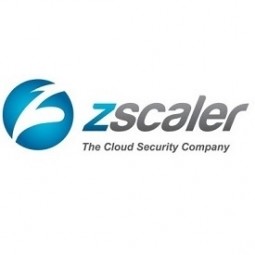Technology Category
- Application Infrastructure & Middleware - Middleware, SDKs & Libraries
- Networks & Connectivity - Global Navigation Satellite System (GNSS)
Applicable Industries
- Buildings
- National Security & Defense
Use Cases
- Traffic Monitoring
- Transportation Simulation
Services
- Cloud Planning, Design & Implementation Services
- System Integration
About The Customer
Carlsberg is a global brewer that owns 140 brands distributed to 150 markets worldwide. In addition to beer, it sells ciders, soft drinks, and bottled water. Carlsberg was founded in 1847 by J.C. Jacobsen and, in 1973, coined its famous tagline, “Probably the best beer in the world.” The company has 41,000 employees worldwide and is headquartered in Copenhagen, Denmark, with regional operations throughout Western Europe, Eastern Europe, and Asia. Over the past few years, Carlsberg has undergone a company-wide transformation with the aim of moving closer to its purpose of 'Brewing for a better today and tomorrow.'
The Challenge
Carlsberg, a global brewer headquartered in Copenhagen, Denmark, was facing a significant challenge in modernizing its IT infrastructure. The company had been operating a traditional centralized network that was not set up to accommodate the needs of today’s businesses and users. The network consisted of a hub-and-spoke architecture, MPLS with central internet breakouts, and centralized security controls. This resulted in a poor user experience, slow connectivity, and lack of visibility into threats and traffic sources. To support its strategic initiative 'Sail ’22', Carlsberg needed to undertake a complete system overhaul, including modernizing the IT infrastructure, embracing Office 365 and moving legacy applications to the cloud, taking control of operational costs, and strengthening security.
The Solution
To address these challenges, Carlsberg planned to migrate almost all of its traffic to the cloud using Microsoft Azure and Microsoft Office 365. The company initiated the project by upgrading all its laptops and desktops to Microsoft Windows 10, supplying employees with next-generation machines. They also introduced a new and improved service desk, along with self-service tools and chatbots. The Carlsberg team then took measures to simplify operations in preparation for moving to the cloud. They reduced the number of applications from 873 to 350 and their on-premises servers from 1,300 to 700. Carlsberg introduced SD-WAN to enable local breakouts and optimize the use of MPLS. It traded its traditional network perimeter security for Zscaler Internet Access, which offers a complete security stack delivered as a cloud service. Zscaler protects today’s mobile users, who are no longer operating behind traditional network appliance security stacks but are instead connecting straight to the cloud, where their applications live.
Operational Impact
Quantitative Benefit

Case Study missing?
Start adding your own!
Register with your work email and create a new case study profile for your business.
Related Case Studies.

Case Study
Energy Saving & Power Monitoring System
Recently a university in Taiwan was experiencing dramatic power usage increases due to its growing number of campus buildings and students. Aiming to analyze their power consumption and increase their power efficiency across 52 buildings, the university wanted to build a power management system utilizing web-based hardware and software. With these goals in mind, they contacted Advantech to help them develop their system and provide them with the means to save energy in the years to come.

Case Study
Intelligent Building Automation System and Energy Saving Solution
One of the most difficult problems facing the world is conserving energy in buildings. However, it is not easy to have a cost-effective solution to reduce energy usage in a building. One solution for saving energy is to implement an intelligent building automation system (BAS) which can be controlled according to its schedule. In Indonesia a large university with a five floor building and 22 classrooms wanted to save the amount of energy being used.

Case Study
Powering Smart Home Automation solutions with IoT for Energy conservation
Many industry leaders that offer Smart Energy Management products & solutions face challenges including:How to build a scalable platform that can automatically scale-up to on-board ‘n’ number of Smart home devicesData security, solution availability, and reliability are the other critical factors to deal withHow to create a robust common IoT platform that handles any kind of smart devicesHow to enable data management capabilities that would help in intelligent decision-making

Case Study
Protecting a Stadium from Hazardous Materials Using IoT2cell's Mobility Platform
There was a need for higher security at the AT&T Stadium during the NFL draft. There was a need to ensure that nuclear radiation material was not smuggled inside the stadium. Hazmat materials could often be missed in a standard checkpoint when gaining entry into a stadium.

Case Study
Commercial Building Automation Boosts Energy Efficiency
One of the challenges to building automation is the multitude of non-interoperable communications protocols that have evolved over the years. Buildings have several islands of automation. Bridging the islands of different automation without losing the considerable investment in each specialized control network is the main focus in this solution.








